We run our website the way we wished the whole internet worked: we provide high quality original content with no ads. We are funded solely by your direct support. Please consider supporting this project.

Two Questions to Unlock Violent Divine Portraits
There are two basic questions that help us to interpret what is going on in the violent portraits of God in the Old Testament, as I propose in Crucifixion of the Warrior God.
The First Question: What does the “God-breathed” revelation of the cross teach us about the nature of God’s “breathing”?
God “breathed” his supreme revelation on the cross by both acting toward us and by allowing others to act toward him. Because God honors the personhood of others, and because he therefore works by means of the influential power of the cross (1 Cor 1:18) rather than by exerting coercive power, God’s “breathing” is a dialectical rather than a unilateral process.
This cross-centered, dialectical understanding of the way God “breathes” should shape how we interpret the way that God “breathed” the Old Testament witness. We must read it with the awareness that it reflects both God acting toward us, insofar as God’s people at that time could receive it, as well as God humbly allowing others to act toward him, insofar as God had to accommodate his people’s fallen and culturally-conditioned hearts and minds. We must read the written witness of the OT knowing that portraits of God will display the same beautiful character as is revealed on the cross insofar as they reflect the former, but they will reflect the same ugliness of sin that is revealed on the cross insofar as they reflect the latter.
In this light, the OT’s violent portraits of God can be understood as testaments to the truth that God has always been willing to humbly stoop to bear the sin of his people and to thereby take on a literary semblance that mirrors the ugliness of this sin, just as he did in a historical way on the cross.
The Second Question: How does a guilty-appearing, godforsaken, crucified criminal become the definitive revelation of God for us?
It is not what everyone can see on the surface of the crucifixion that reveals God. Rather it is only when we by faith look through the surface of this event that it becomes the definitive revelation of God for us. Only by faith can we discern the Creator stooping an infinite distance to become this guilty-appearing, godforsaken, crucified criminal.
Since the God who “breathed” this paradigmatic revelation is the same God who “breathed” his written witness to this revelation, we should read Scripture expecting that there will be times when the revelatory content of a portrait of God is to be found not on its surface, but in its depth. The first can be understood by straightforward exegesis, but the second calls for faith to discern the humble, loving condescension of God.
However, we can only interpret the OT’s violent portraits in this sin-bearing way if we place our compete trust in the character of God revealed on the cross. If we suspect that God has a dark side and is capable of doing the monstrous things that the OT authors attribute to him, we will mistake the “shadow” for the “reality” (Col 2:17; Heb 10:1).
To put it another way, if we fail to place our trust in the revelation of the crucified Christ, we are trading the unclouded revelation of the Son, who alone is the “radiance of God’s glory” (Heb 1:3) for the cloudy perspective of ancient authors who could only catch “glimpses of truth” (Heb 1:1).
Only the slain lamb unlocks the secret of how macabre portraits of God point to him.
—Adapted from Crucifixion of the Warrior God, pages 1250-1252
Photo credit: Vitor Sá Photo via Visual Hunt / CC BY-NC-ND
Category: General
Tags: Crucifixion of the Warrior God, Cruciform Theology, OT Violence
Topics: Interpreting Violent Pictures and Troubling Behaviors
Related Reading
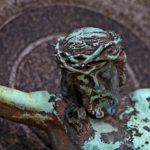
How Job’s Suffering Points to Jesus
As I introduced in my previous post, when we read the book of Job we must refute the common assumption that Yahweh is a Machiavellian deity who is controlling all that transpires in his creation, including Job’s suffering. At the same time, we must ask why the prologue (1:11-2, 2:3) and perhaps the final chapter…
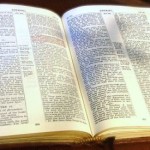
Answering an Objection to a Cross-Centered Approach to Scripture
Through Greg’s Facebook and Twitter, we’ve been getting some great feedback and questions regarding his cross-centered approach to Scripture. Several have voiced questions similar to the reader’s (below), so we thought it would be helpful to post Greg’s answer here on his blog.
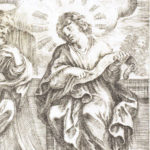
The Bible is NOT the Foundation
Many people imagine that the foundation of their faith is the Bible. This is viewed as the ultimate center around which everything they believe revolves. However, the foundation of the Christian faith is actually centered on a person, not a book. Whereas Islam has always presented itself as a “religion of the book,” the kingdom…

From Boston, With Love
We posted some of T. C. Moore’s reflections on the Open 2013 conference earlier this week. T. C. lives in Boston and was deeply moved by the violence and terror that came to his city. Now we want to share his most recent blog post Oz and the Cross: Reflections on God’s Love and the…
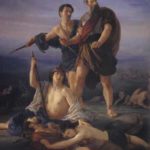
Did God Kill King Saul?
When we approach Scripture with the assumption that it is all God-breathed for the purpose of bearing witness to Christ, even the most trivial contradictions in Scripture can acquire theological significance. This is what I argue in Cross Vision. Here I want to illustrate this by briefly discussing the theological significance of a curious discrepancy…
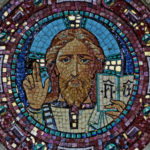
The Centrality of Christ in Hebrews, Part 1
The intense Christocentricity that the New Testament writers embrace is nowhere more clearly and consistently illustrated than in the book of Hebrews. Throughout this work we find a repeated emphasis on the many ways the revelation given to us in Christ surpasses that of the Old Testament. The author begins by stressing how the revelation…
